Chestnut Honey Impregnated Carboxymethyl Cellulose Hydrogel for Diabetic Ulcer Healing
Abstract
:1. Introduction
2. Experimental
2.1. Materials
2.2. Preparation of Chestnut Honey Impregnated CMC Hydrogel
2.3. Preparation of Chestnut Honey Impregnated CMC Hydrogel Paste (CH–CMC)
2.4. Measurement
2.5. Antibacterial Test
2.6. In Vivo Wound Healing Experiment
3. Results and Discussion
3.1. Physical Properties
3.2. Antibacterial Activity
3.3. In Vivo Wound Healing Assessment
4. Conclusions
Acknowledgments
Author Contributions
Conflicts of Interest
References
- Moniruzzaman, M.; Sulaiman, S.A.; Azlan, S.A.M.; Gan, S.H. Two-year variations of phenolics, flavonoids and antioxidant contents in acacia honey. Molecules 2013, 18, 14694–14710. [Google Scholar] [CrossRef] [PubMed]
- Kamal, M.A.; Klein, P. Determination of sugars in honey by liquid chromatography. Saudi J. Biol. Sci. 2011, 18, 17–21. [Google Scholar] [CrossRef] [PubMed]
- Al-Mamary, M.; Al-Meeri, A.; Al-Habori, M. Antioxidant activities and total phenolics of different types of honey. Nutr. Res. 2002, 22, 1041–1047. [Google Scholar] [CrossRef]
- Alvarez-Suarez, J.M.; Tulipani, S.; Díazb, D.; Estevez, Y.; Romandini, S.; Giampieri, F.; Damiani, E.; Astolfi, P.; Bompadre, S.; Battino, M. Antioxidant and antimicrobial capacity of several monofloral Cuban honeys and their correlation with color, polyphenol content and other chemical compounds. Food Chem. Toxicol. 2010, 48, 2490–2499. [Google Scholar] [CrossRef] [PubMed]
- Anupama, D.; Bhat, K.K.; Sapna, V.K. Sensory and physico-chemical properties of commercial samples of honey. Food Res. Int. 2003, 36, 183–191. [Google Scholar] [CrossRef]
- Castro-Vázquez, L.; Díaz-Maroto, M.C.; de Torres, C.; Pérez-Coello, M.S. Effect of geographical origin on the chemical and sensory characteristics of chestnut honeys. Food Res. Int. 2010, 43, 2335–2340. [Google Scholar] [CrossRef]
- Kropf, U.; Korosec, M.; Bertoncelj, J.; Ogrinc, N.; Necemer, M.; Kump, P.; Golob, T. Determination of the geographical origin of Slovenian black locust, lime and chestnut honey. Food Chem. 2010, 121, 839–846. [Google Scholar] [CrossRef]
- Lusby, P.E.; Coombes, A.L.; Wilkinson, J.M. Bactericidal Activity of Different Honeys against Pathogenic Bacteria. Arch. Med. Res. 2005, 36, 464–467. [Google Scholar] [CrossRef] [PubMed]
- Meda, A.; Lamien, C.E.; Millogo, J.; Romito, M.; Nacoulma, O.G. Therapeutic uses of honey and honeybee larvae in central Burkina Faso. J. Ethnopharmacol. 2004, 95, 103–107. [Google Scholar] [CrossRef] [PubMed]
- Moghazy, A.M.; Shams, M.E.; Adly, O.A.; Abbas, A.H.; El-Badawy, M.A.; Elsakka, D.M.; Hassan, S.A.; Abdelmohsen, W.S.; Ali, O.S.; Mohamed, B.A. The clinical and cost effectiveness of bee honey dressing in the treatment of diabetic foot ulcers. Diabetes Res. Clin. Pract. 2010, 89, 276–281. [Google Scholar] [CrossRef] [PubMed]
- Nasuti, C.; Gabbianelli, R.; Falcioni, G.; Cantalamessa, F. Antioxidative and gastroprotective activities of anti-inflammatory formulations derived from chestnut honey in rats. Nutr. Res. 2006, 26, 130–137. [Google Scholar] [CrossRef]
- Alissandrakis, E.; Tarantilis, P.A.; Pappas, C.; Harizanis, P.C.; Polissiou, M. Investigation of organic extractives from unifloral chestnut (Castanea sativa L.) and eucalyptus (Eucalyptus globulus Labill) honey and flowers to identification of botanical marker compounds. LWT Food Sci. Technol. 2011, 44, 1042–1051. [Google Scholar] [CrossRef]
- Meteoglu, I.; Kavas, N.C.; Saricaoglu, M.; Ilkaya, F.; Guzel, H.; Alici, O.; Ozturk, F. Chestnut honey and sherbet enhance the healing of burn wounds in rat model. Clin. Investig. Med. 2015, 38, E267–E273. [Google Scholar]
- Hao, J.J.; Liu, H.; Donis-Gonzalez, I.R.; Lu, X.H. Antimicrobial activity of chestnut extracts for potential use in managing soilborne plant pathogens. Plant Dis. 2012, 96, 354–360. [Google Scholar] [CrossRef]
- Nho, Y.C.; Park, J.S.; Lim, Y.M. Preparation of hydrogel by radiation for the healing of diabetic ulcer. Radiat. Phys. Chem. 2014, 94, 176–180. [Google Scholar] [CrossRef]
- Park, J.S.; Kuang, J.; Lim, Y.M.; Gwon, H.J.; Nho, Y.C. Characterization of silver nanoparticle in the carboxymethyl cellulose hydrogel prepared by a gamma ray irradiation. J. Nanosci. Nanotechnol. 2012, 12, 743–747. [Google Scholar] [CrossRef] [PubMed]
- Liu, P.; Peng, J.; Li, J.; Wu, J. Radiation crosslinking of CMC–Na at low dose and its application as substitute for hydrogel. Radiat. Phys. Chem. 2005, 72, 635–638. [Google Scholar] [CrossRef]
- Gwon, H.J.; Lim, Y.M.; Nho, Y.C.; Baik, S.H. Humectants effect on aqueous fluids absorption of γ-irradiated PVA hydrogel followed by freeze thawing. Radiat. Phys. Chem. 2010, 79, 650–653. [Google Scholar] [CrossRef]
- Meller, R.; Rabber, W.; Crowley, J.N.; Jenkin, M.E.; Moortgat, G.K. The UV–visible absorption spectrum of methylglyoxal. J. Photochem. Photobiol. A 1991, 62, 163–171. [Google Scholar] [CrossRef]
- Yusof, N.; Ainul Hafiza, A.H.; Zohdi, R.M.; Bakar, M.Z.A. Development of honey hydrogel dressing for enhanced wound healing. Radiat. Phys. Chem. 2007, 76, 1767–1770. [Google Scholar] [CrossRef]
- Choi, D.S.; Kim, S.H.; Lim, Y.M.; Gwon, H.J.; Park, J.S.; Nho, Y.C.; Kwon, J.K. Hydrogel Incorporated with Chestnut Honey Accelerates Wound Healing and Promotes Early HO-1 Protein Expression in Diabetic (db/db) Mice. Tissue Eng. Regen. Med. 2012, 9, 36–42. [Google Scholar] [CrossRef]
- Straccia, M.; Ayala, G.G.; Romano, I.; Oliva, A.; Laurienzo, P. Alginate Hydrogels Coated with Chitosan for Wound Dressing. Mar. Drugs 2015, 13, 2890–2908. [Google Scholar] [CrossRef] [PubMed]
- Park, J.S.; Kuang, J.; Gwon, H.J.; Lim, Y.M.; Jeong, S.I.; Shin, Y.M.; Khil, M.S.; Nho, Y.C. Synthesis and characterization of zinc chloride containing poly(acrylic acid) hydrogel by gamma irradiation. Radiat. Phys. Chem. 2013, 88, 60–64. [Google Scholar] [CrossRef]
- Subrahmanyam, M. Honey dressing versus boiled potato peel in the treatment of burns: A prospective randomized study. Burns 1996, 22, 491–493. [Google Scholar] [CrossRef]
- Alvarez-Suarez, J.M.; Gasparrini, M.; Forbes-Hernández, T.Y.; Mazzoni, L.; Giampieri, F. The Composition and Biological Activity of Honey: A Focus on Manuka Honey. Foods 2014, 3, 420–432. [Google Scholar] [CrossRef] [PubMed]
- Al Somal, N.; Coley, K.E.; Molan, P.C.; Hancock, B.M. Susceptibility of Helicobacter pylori to the antibacterial activity of Manuka honey. J. R. Soc. Med. 1994, 87, 9–12. [Google Scholar] [PubMed]
- George, N.; Cutting, K. Antibacterial Honey (Medihoney™): In vitro activity against clinical isolates of MRSA, VRE, and other multiresistant Gram-negative organisms including Pseudomonas aeruginosa. Wounds 2007, 19, 231–236. [Google Scholar] [PubMed]
- Lin, S.M.; Molan, P.C.; Cursons, R.T. The controlled in vitro susceptibility of gastrointestinal pathogens to the antibacterial effect of Manuka honey. Eur. J. Clin. Microbiol. Infect. Dis. 2011, 30, 569–574. [Google Scholar] [CrossRef] [PubMed]
- Mavric, E.; Wittmann, S.; Barth, G.; Henle, T. Identification and quantification of methylglyoxal as the dominant antibacterial constituent of manuka (Leptospermum scoparium) honeys from New Zealand. Mol. Nutr. Food Res. 2008, 52, 483–489. [Google Scholar] [CrossRef] [PubMed]
- Mukherjee, S.; Chaki, S.; Das, S.; Sen, S.; Dutta, S.K.; Dastidar, S.G. Distinct synergistic action of piperacillin and methylglyoxal against Pseudomonas aeruginosa. Indian J. Exp. Biol. 2011, 49, 547–551. [Google Scholar] [PubMed]
- Kawkman, P.H.S.; Zaat, S.A.J. Antibacterial components of honey. IUBMB Life 2012, 64, 48–55. [Google Scholar] [CrossRef] [PubMed]
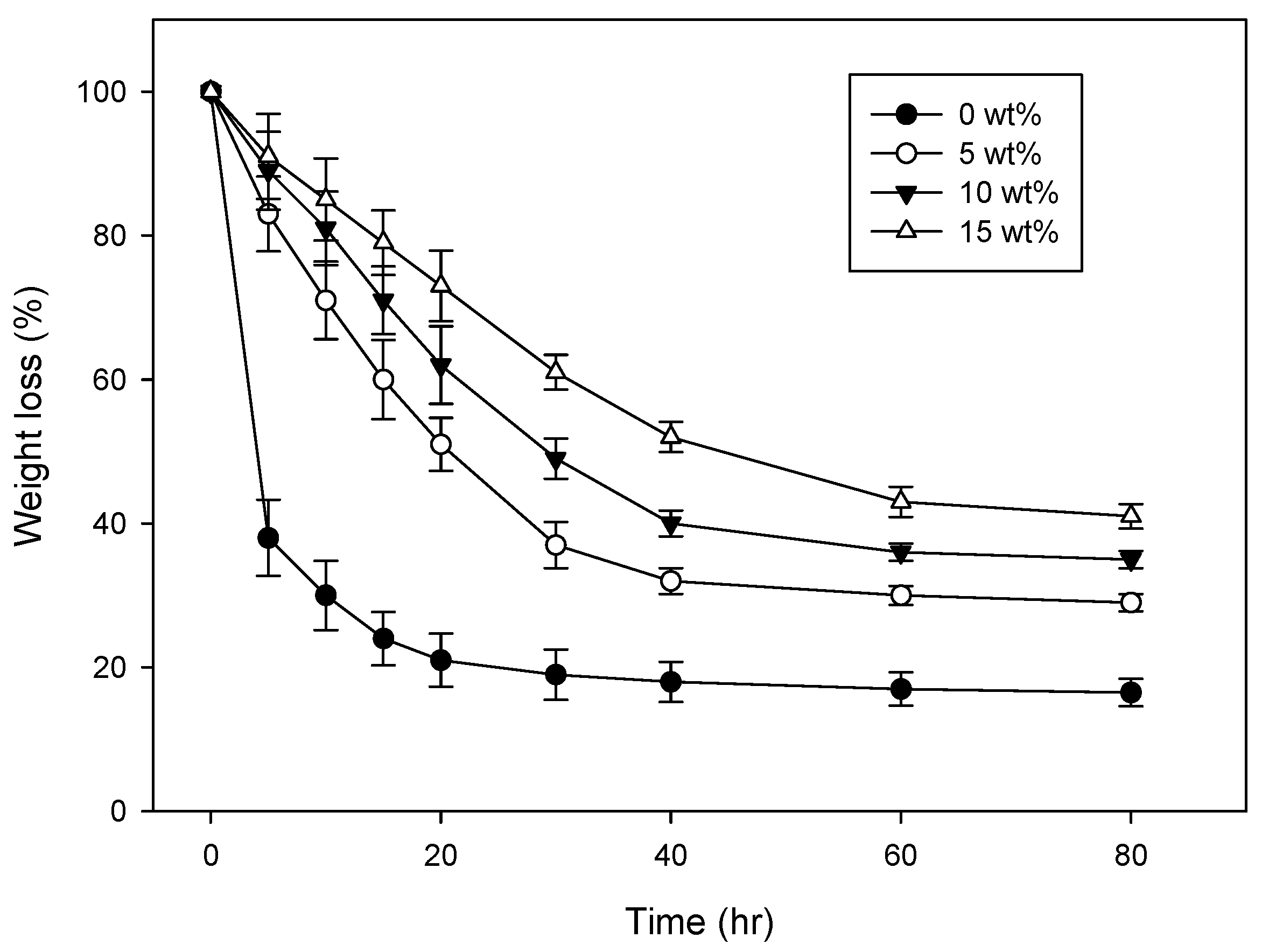
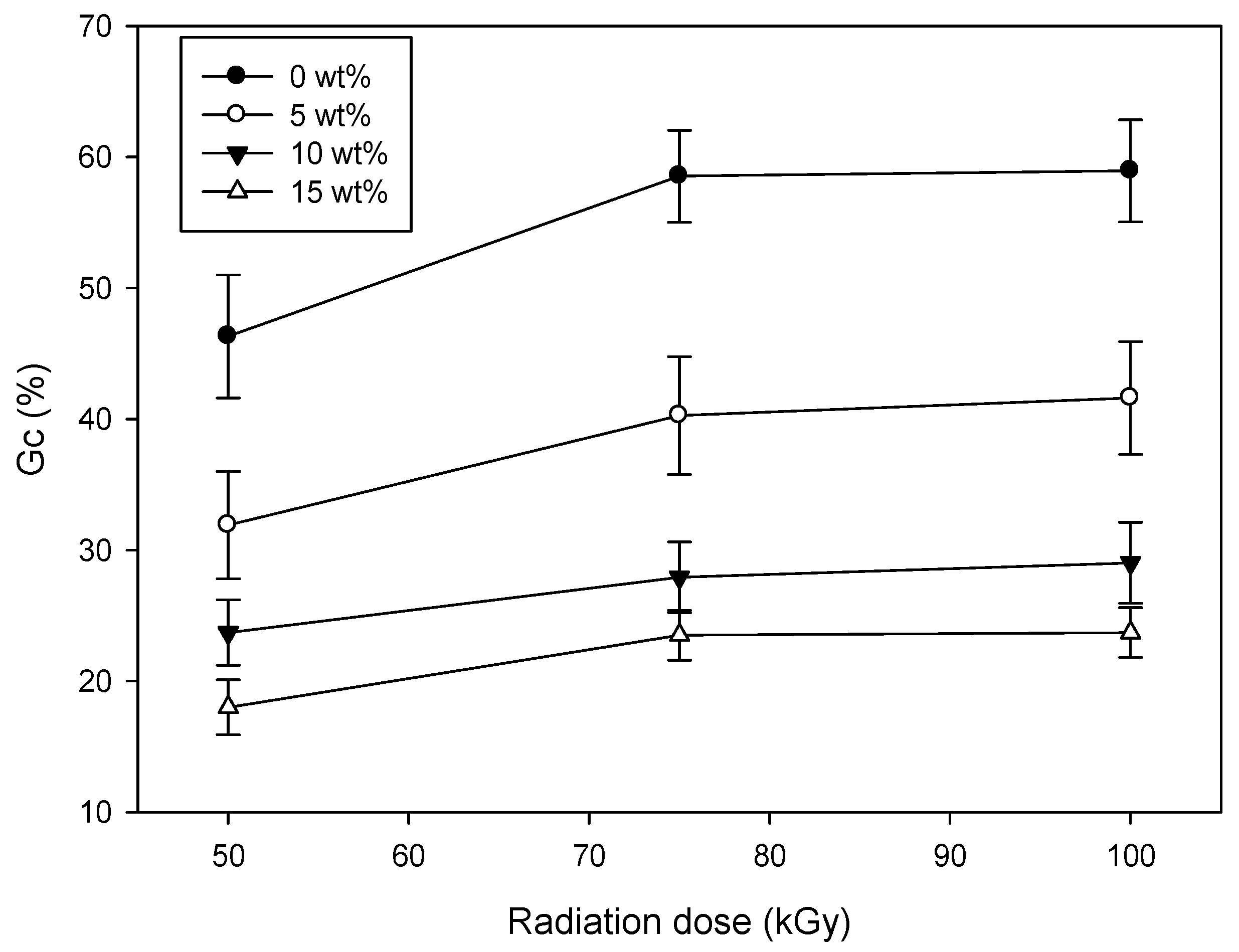
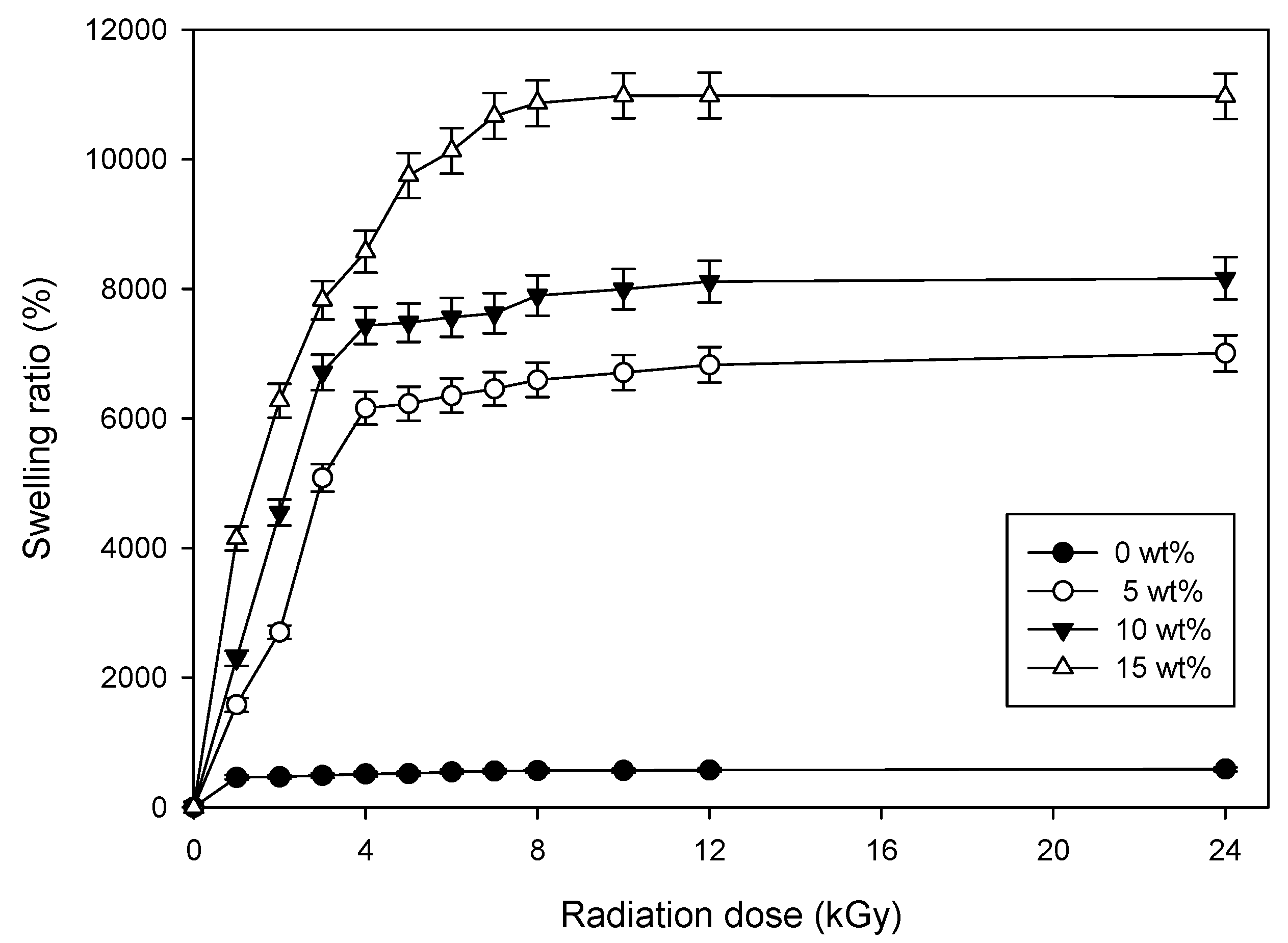
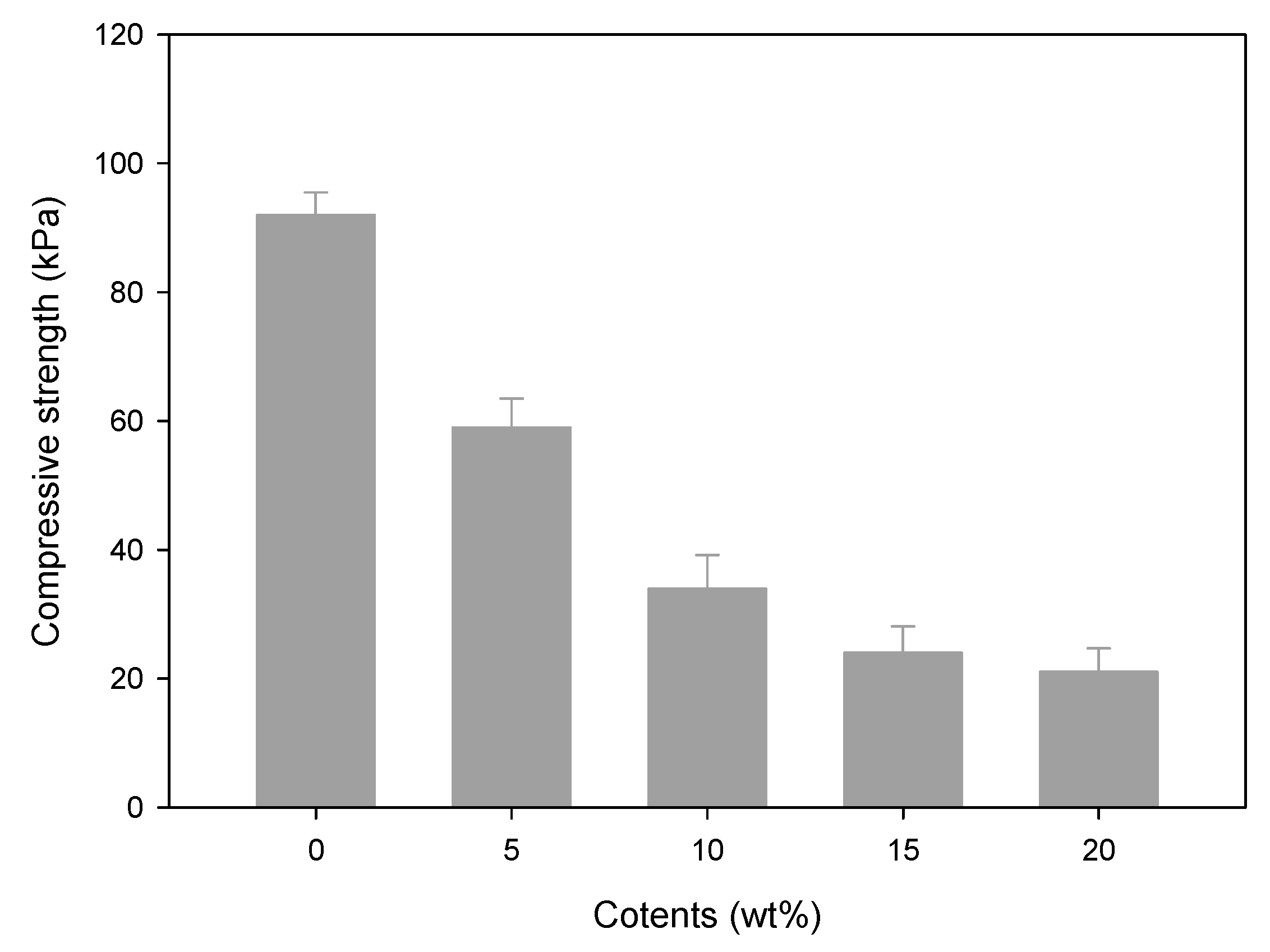
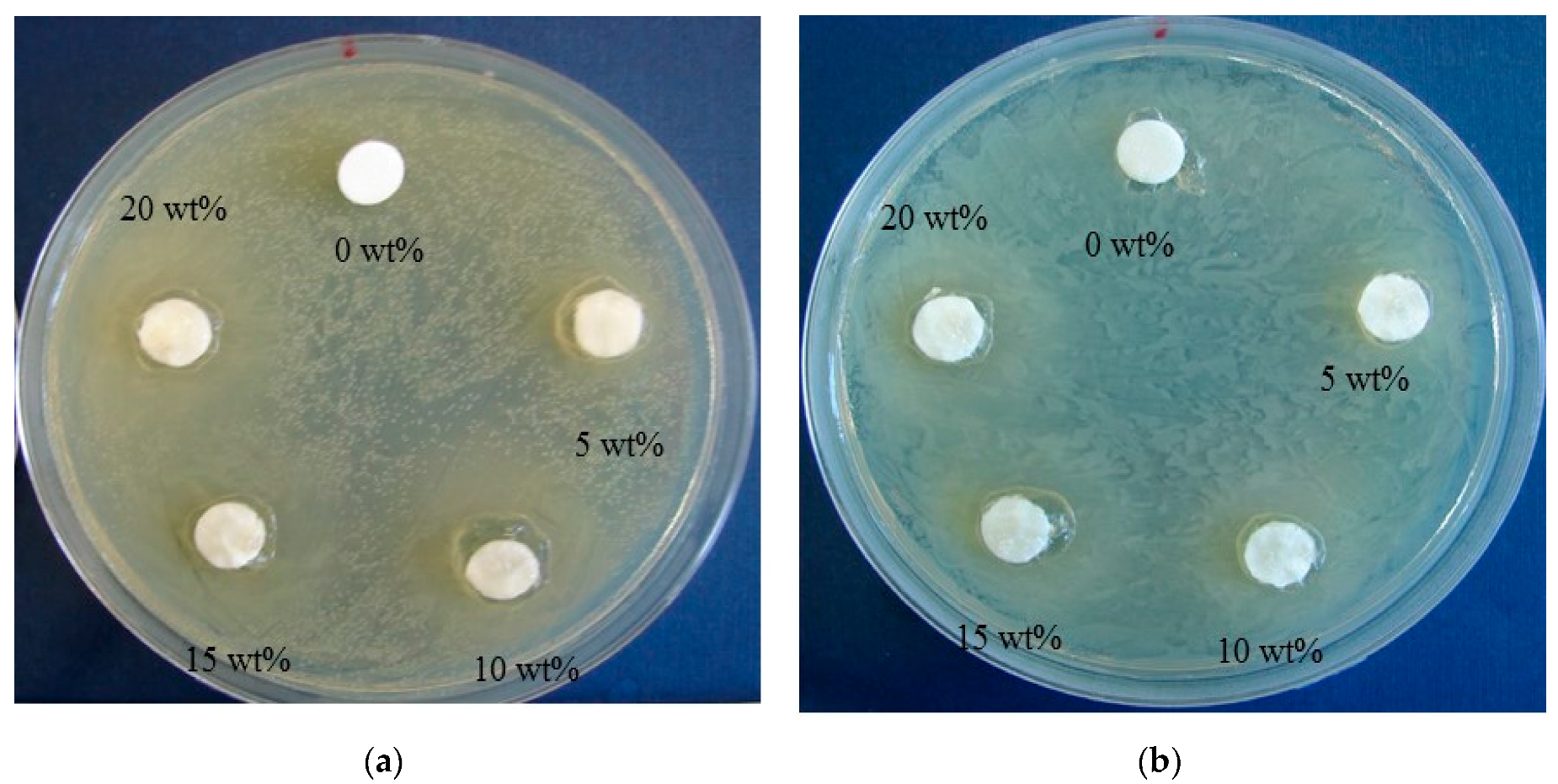
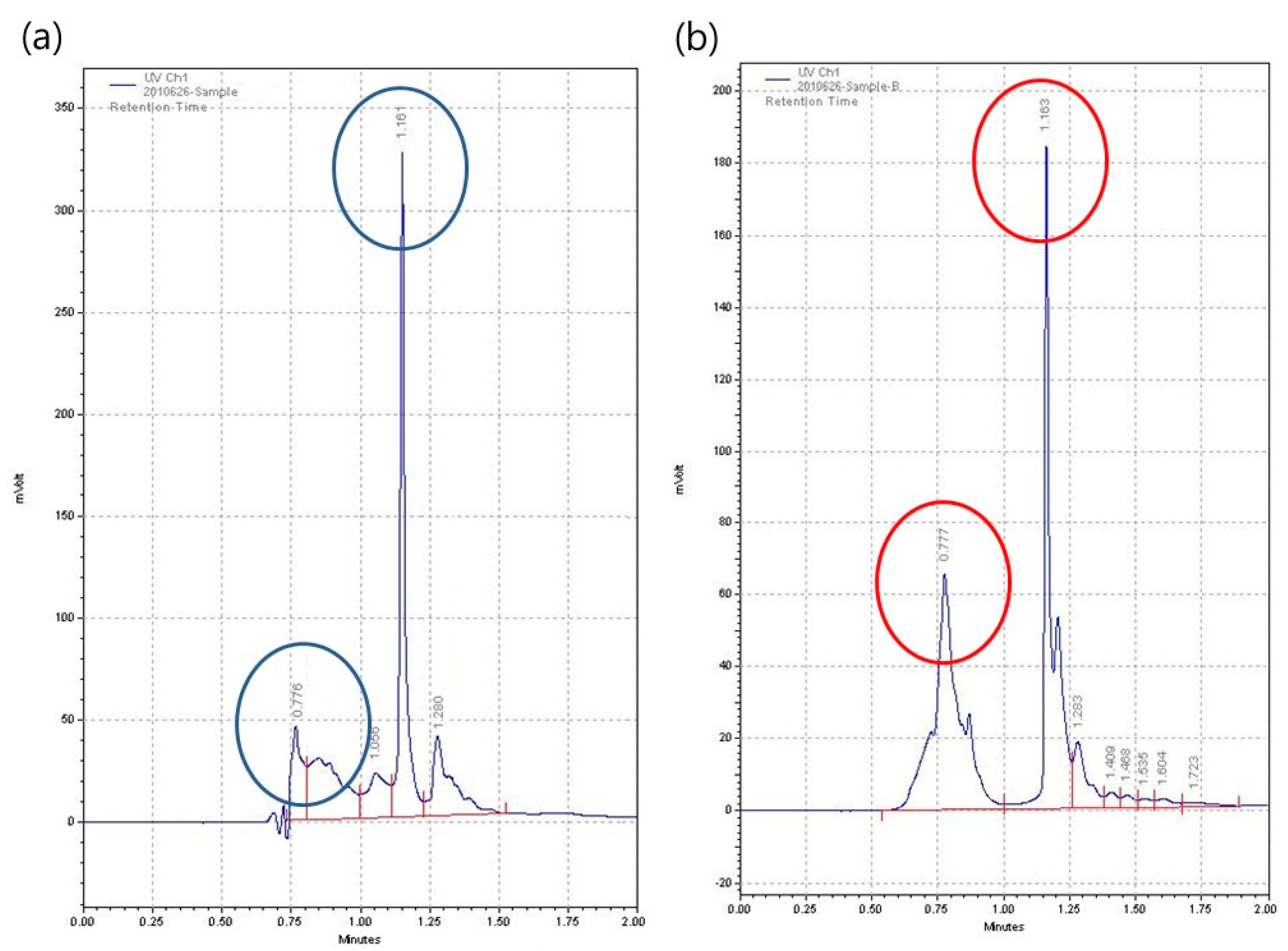
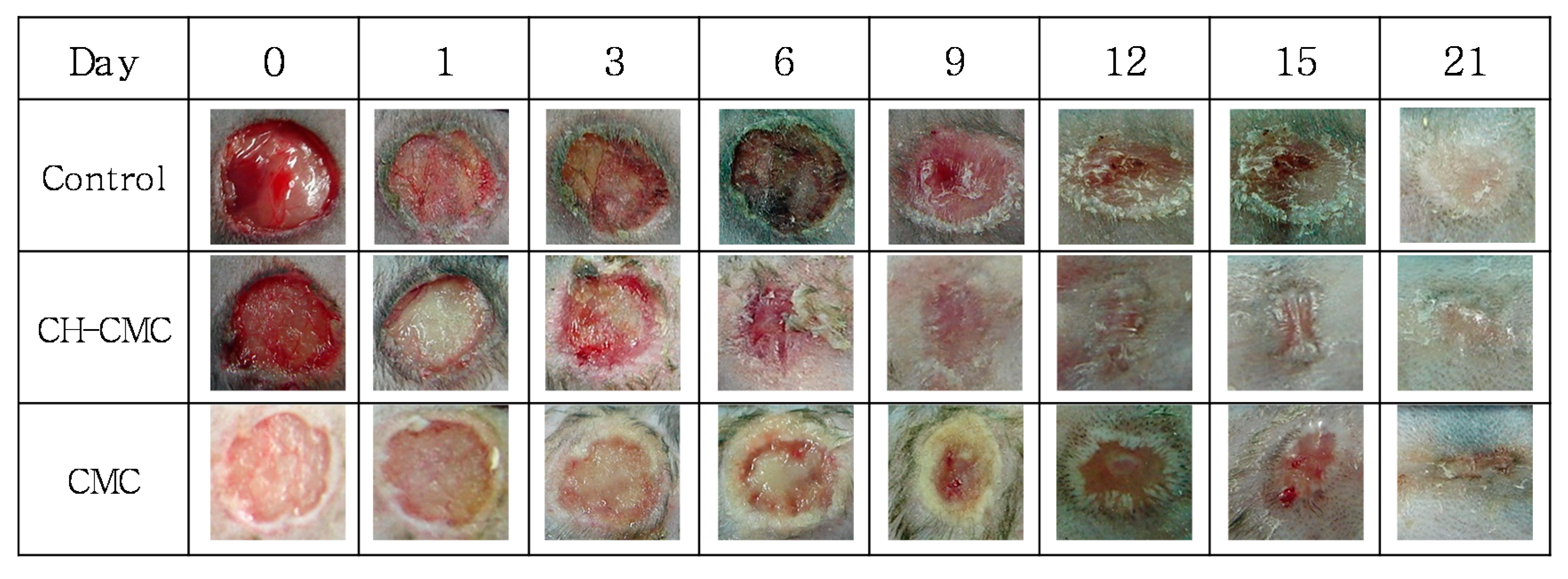
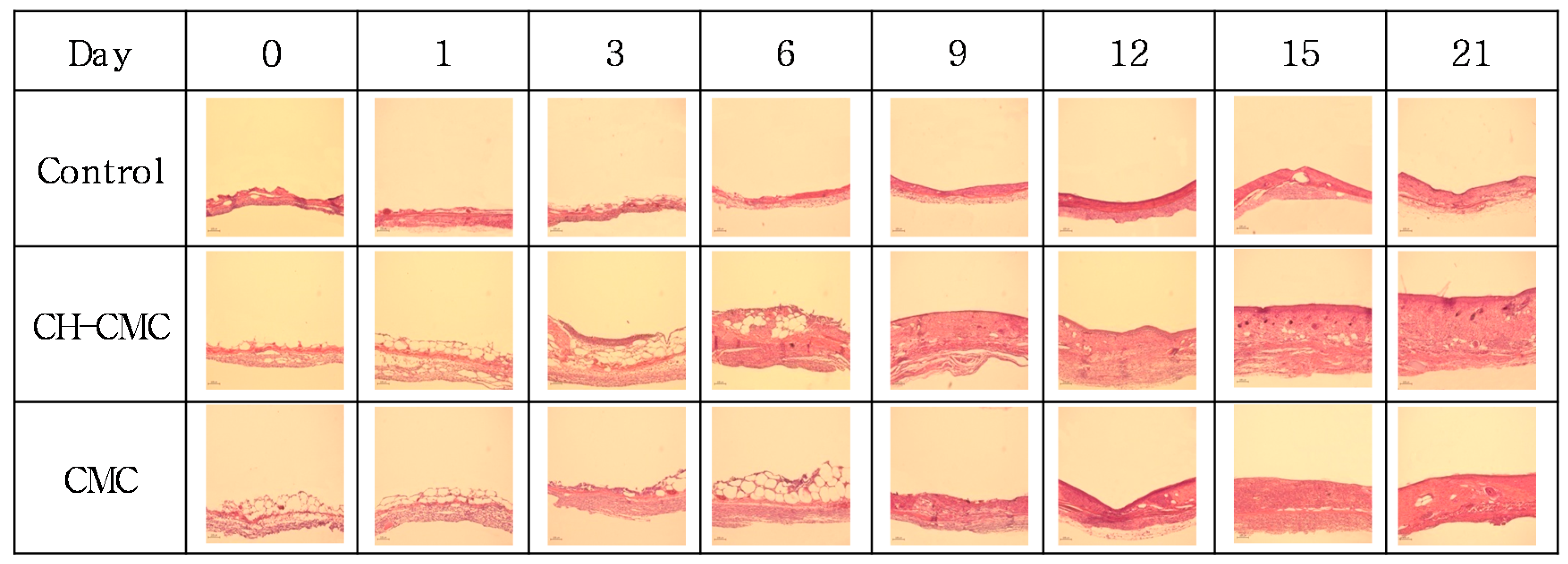
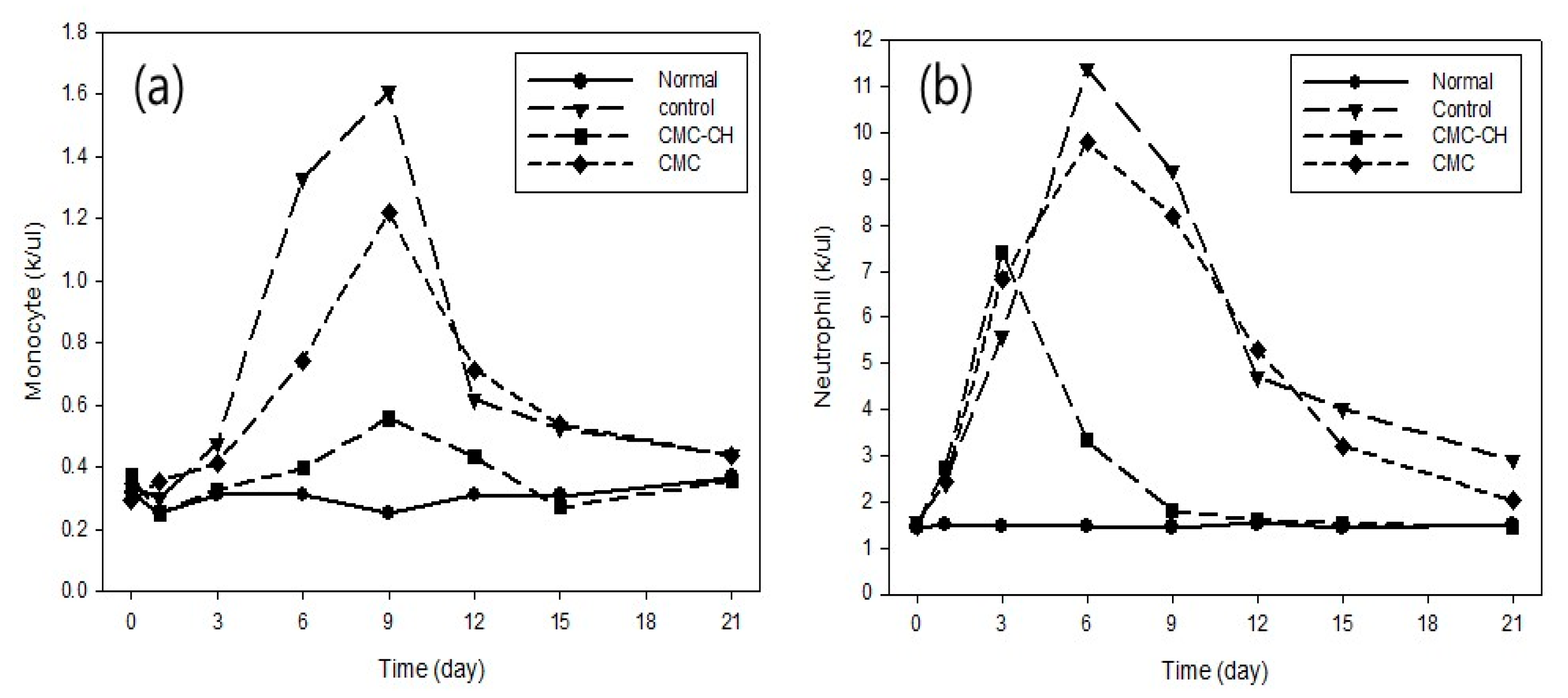
| CH–CMC | Inhibition Zone | |
|---|---|---|
| S. aureus | E. coli | |
| 0 wt % | - | - |
| 5 wt % | + | + |
| 10 wt % | ++ | ++ |
| 15 wt % | ++ | ++ |
| 20 wt % | +++ | ++ |
© 2017 by the authors. Licensee MDPI, Basel, Switzerland. This article is an open access article distributed under the terms and conditions of the Creative Commons Attribution (CC BY) license (http://creativecommons.org/licenses/by/4.0/).
Share and Cite
Park, J.-S.; An, S.-J.; Jeong, S.-I.; Gwon, H.-J.; Lim, Y.-M.; Nho, Y.-C. Chestnut Honey Impregnated Carboxymethyl Cellulose Hydrogel for Diabetic Ulcer Healing. Polymers 2017, 9, 248. https://doi.org/10.3390/polym9070248
Park J-S, An S-J, Jeong S-I, Gwon H-J, Lim Y-M, Nho Y-C. Chestnut Honey Impregnated Carboxymethyl Cellulose Hydrogel for Diabetic Ulcer Healing. Polymers. 2017; 9(7):248. https://doi.org/10.3390/polym9070248
Chicago/Turabian StylePark, Jong-Seok, Sung-Jun An, Sung-In Jeong, Hui-Jeong Gwon, Youn-Mook Lim, and Young-Chang Nho. 2017. "Chestnut Honey Impregnated Carboxymethyl Cellulose Hydrogel for Diabetic Ulcer Healing" Polymers 9, no. 7: 248. https://doi.org/10.3390/polym9070248






